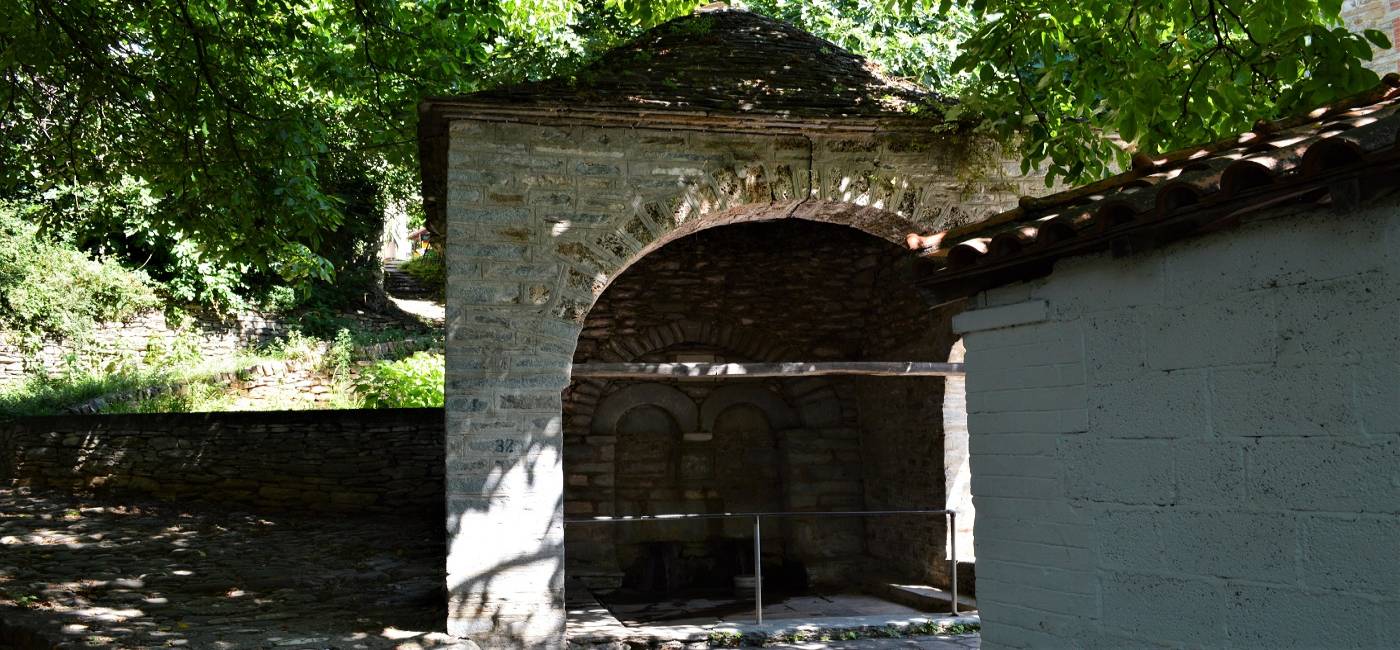Promyri
In contrast to most Greek villages whose old foreign name was “hellenized” after the creation of the modern Greek state, Promyri retained its old slavic name that describes it perfectly as a peaceful village. No other toponym would be a better fit for a truly quiet village located amidst valleys of Pelion olive trees.
Promyri stands out for its unusual (for Pelion standards) and uniform domestic architecture. Almost all the village houses belong to the big farmhouse type with two or three stories. Apart from the three-aisle basilica at the edge of the village and two or three other buildings, all the houses in Promyri have tile roofs. Wherever there used to be roofs with Pelion slabs, these were subsequently covered with tiles. Perhaps because tiles match better the neoclassical style of architecture that dominates the built landscape. Tile roofs are also less expensive.
Unlike other Pelion villages, at Promyri there are no hayiatia, wooden sahnisia and painted fenestras on top of the windows. Instead there is simplicity and symmetry. Three or five big windows open on the upper floor. At the center, a small balcony seems to be floating in the air, an indication of urban architecture rather than rustic.
The residents of Promyri love color and do not hesitate to paint the walls of their houses in bright colors that match the neoclassical style. It is very unusual in the Pelion peninsula where most houses are painted white. Promyri is certainly the most colorful village in Pelion.
The double village square and the two fountain houses situated one next to the other are features unique to Promyri adding welcomed complexity to the built environment. Every Pelion village is unique but some more than others!




